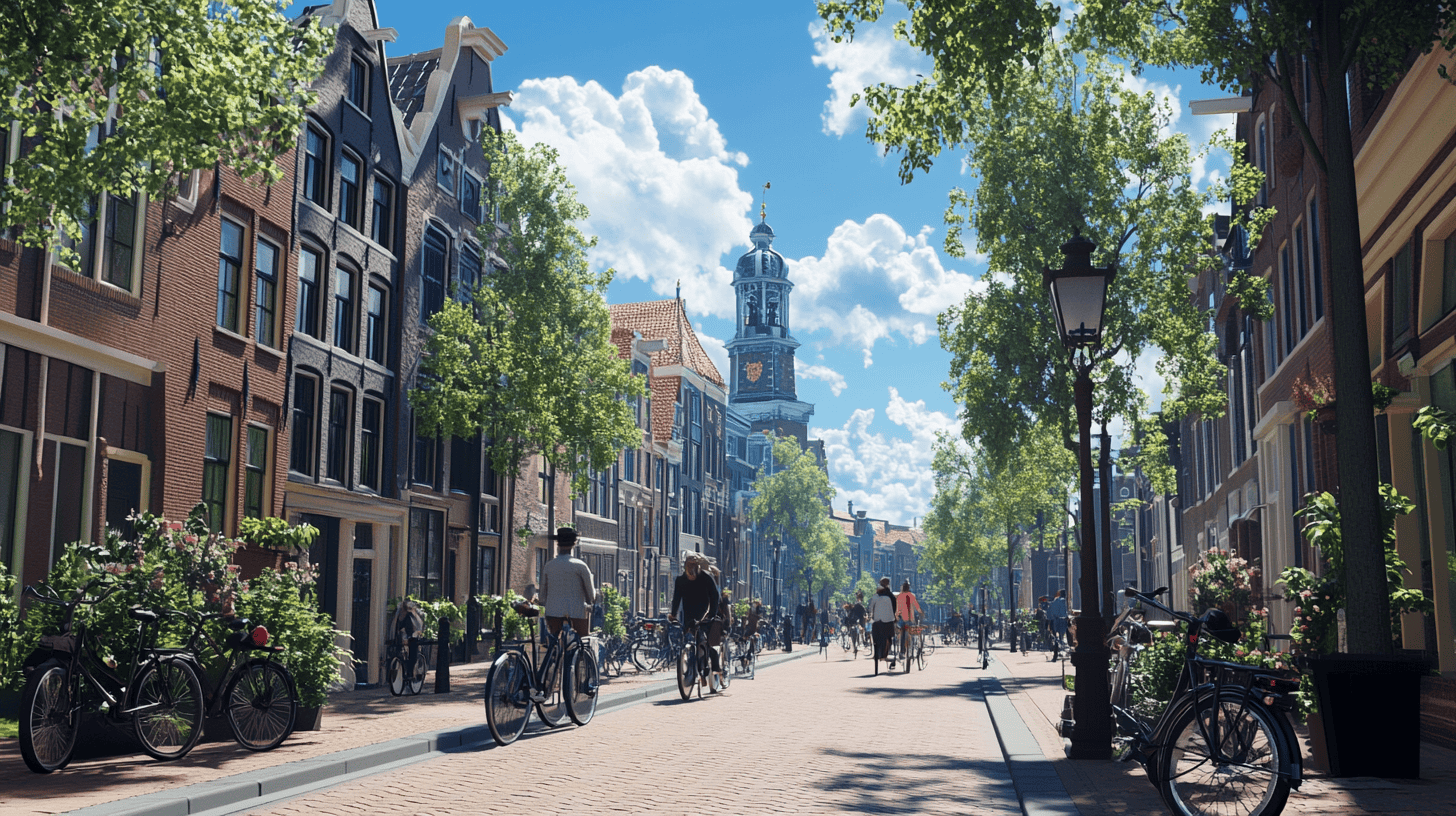
Heerlen is the Dutch city with the cleanest air, while Eindhoven has the poorest, according to new data from the European Environmental Agency (EEA). No one of the Dutch cities surveyed belongs to the category of European cities with good air quality.
The EEA recently ranked European cities’ air quality based on the average levels of fine particulate matter (PM2.5) in 2022 and 2023. PM2.5 stands for particulate matter particles 2.5 micrometers and smaller in diameter. Given their size, they can easily be inhaled and cause health problems. PM2.5 comes from sources like vehicle emissions, industrial processes, and fuel burning. Bad air quality is behind 300,000 deaths yearly in the EU.
The report shows that only 13 European cities complied with the World Health Organization (WHO) guideline of 5 micrograms per cubic meter (μg/m3) of air. Among them are four Nordic capitals: Helsinki, Reykjavik, Tallinn, and Stockholm. Overall, the Swedish city of Uppsala has the best air quality, with an average of 3.5 μg/m3. In Sweden, for instance, the amount of fine particles has decreased by over half since 2000 as emissions coming from traffic, wood combustion, and industry have diminished.
How Dutch cities position themselves
As shown in the map above, no Dutch city belongs to the cities with good air quality. The 11 surveyed urban areas all fall under the fair air quality level – 5 to 10 μg/m3 of average concentration – with Eindhoven just making it into this bracket with 9.7μg/m3. In addition to Heerlen, The Hague, Groningen, Enschede, and Breda make it into the top 50, as Utrecht, Amsterdam, and Rotterdam lag behind. Besides, figures for Maastricht, Arnhem, and Amersfoort, among the others, are missing. The EEA specifies that the ranking only includes cities that have urban or suburban air quality monitoring stations for PM2.5 and that are included in the database of cities established under the European Commission’s Urban Audit.
Air quality levels
The EEA categorizes air quality as: Good for levels that don’t exceed the 5 μg/m3 WHO guideline; fair for levels above 5 and not exceeding 10 μg/m3; moderate for levels above 10 and not exceeding 15 μg/m3; poor for levels above 15 and not exceeding 25 μg/m3; very poor for levels above the EU limit value of 25 μg/m3
The case of Eindhoven
The presence of the airport, the proximity to major national roads, and many livestock farms around the city are some of the drivers behind Eindhoven’s relatively poor air quality, as per Henry van der Velden, advisor on Healthy Urbanisation at the Municipality of Eindhoven. In order to monitor air quality and then take appropriate measures to reduce air pollution, the city council partnered up with the Dutch Institute for Applied Scientific Research (TNO).
The collaboration resulted in the Air Monitoring Network, which groups detections from the national air quality monitoring network, dedicated TNO stations, and residents’ measurements. The monitoring network has already resulted in practical policies, including a redesign of one of the main connecting roads in the city center, as well as more public transport connections to the airport.

The rest of Europe
Most of the cities complying with the WHO guideline for PM2.5 concentrations are in the North of Europe, except for the Portuguese Faro and Funchal – on the island of Madeira.
By contrast, most of the cities with poor air quality are in the South and East of Europe. The majority of the reported cities in the Italian Po Valley and in Poland have poor air quality. The Croatian Slavonski Brod is the only surveyed city exceeding the 25 μg/m3 threshold with 26,5 μg/m3. Bucharest is the capital with the worst air quality (15,6 μg/m3), followed by Ljubljana (15,4 μg/m3) and Warsaw (15 μg/m3).
Air quality targets
In April, the European Parliament approved a revised version of the Ambient Air Quality Directive. The law sets more stringent air quality targets to be met by 2030 for some of the most common pollutants, such as nitrogen dioxide and fine particles. Annual limits for PM2.5 will be more than halved, dropping from 25 μg/m3 to 10μg/m3. Nevertheless, EU countries can ask to postpone the deadline to 2040 if some conditions apply, keeping in mind 2050 as the end target for zero air pollution.

